Corso di Dottorato in Fisica
Ciclo XXXVIII 2022-25 (bando chiuso - selezione in corso)
Ciclo XXXVII 2021-24 (in corso)
Ciclo XXXVI 2020-2023 (in corso)
XXXVIII Ciclo - Bando per l'ammissione
Il bando per l'ammissione al XXXVIII Ciclo del corso di Dottorato in Fisica – a.a. 2022/2023 è pubblicato a questo indirizzo.
Scadenza 27/6/2022
XXXVII ciclo - In corso
 Mattia Bassotti
Mattia Bassotti
Questo indirizzo email è protetto dagli spambots. È necessario abilitare JavaScript per vederlo.t
Title: Novel two-dimensional materials: growth and characterization of thin films for photovoltaics and ultra-low consumption electronics.
The research project will deal with the physics of two-dimensional materials (2DM), in view of their application in the fields of photovoltaics and ultra-low consumption electronics. A first objective is to optimize the growth parameters for the deposition of thin films of novel 2DMs (such as porphyrin, perovskites or dichalcogenide) through evaporation techniques available at the “Laboratorio Congiunto Superfici e Nanostrutture”, where the experimental chamber ACROSS is present. Structural engineering as well as interactions with the substrates will also be considered as tuning factors in improving the films performance.
Along with this, the research will focus on the characterization of deposited films. Structural and crystal properties of the samples will be investigated by means of Atomic Force Microscopy (AFM), Low-Energy Electron Diffraction (LEED) and Auger Electron Spectroscopy (AES) while the opto-electronic properties will be studied using, for example, Inverse Photoemission Spectroscopy (IPES) and Ultraviolet Photoelectron Spectroscopy (UPS).
The period of internship at the company will be managed in order to identify the materials that appear to be more promising and easily scalable at the industrial level and to optimize the growth processes.
 Giulio Bianchini
Giulio Bianchini
Questo indirizzo email è protetto dagli spambots. È necessario abilitare JavaScript per vederlo.
Title: "Development of Solutions for Efficient FPGA-based computing architectures generation"
Field Programmable Gate Arrays (FPGAs) are playing an increasingly important role in the data sampling and processing industry thanks to their highly parallel architecture, low power consumption and the flexibility of using custom algorithms. In particular, in the field of artificial intelligence, for the training and implementation of neural networks and machine learning algorithms, energy-efficient hardware and massive parallel processing capacity are in great demand. At the software level, programming in an FPGA environment is possible thanks to tools that provide a "firmware-agnostic" abstraction layer of multiple backends, from the proprietary Xilinx / Intel ones to the more generic and flexible ones such as BondMachine (BM), a reconfigurable computing system that uses the FPGA to create a highly specialized parallelizable architecture to solve a specific task. The aim of the project is to enable the integration of a neural network (DNN) on FPGA, starting from training up to its production in order to be subsequently used for data processing by developing open source software, for example evolving and extending tools such as the BM. The system will be accessible to the end user through GUI and will support automatic FPGA provisioning according to the cloud paradigm. The expected results include the realization of a system that allows the use of standard neural network models that can be integrated on FPGA using BM and the possibility of using, through cloud services, a registry of neural network models that will be pre-trained to perform a specific task.
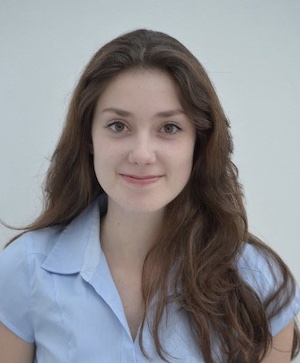 Beatrice Caviglia
Beatrice Caviglia
Questo indirizzo email è protetto dagli spambots. È necessario abilitare JavaScript per vederlo.
Title: Arrest of the Proteome dynamics at the cell death temperature
Proteins can be physically seen as a marginally stable soft-matter entity, meaning that upon thermal stress they partially or completely lose their structure. The unfolding of either the whole proteome or a small set of proteins is thought to be the cause of cell death. The dynamics inside a cell can be studied as a proxy to monitor cell death. For instance, proteins live in a crowded space where the unfolding of a small set of proteins might affect the physical properties of the cytoplasm, impacting on the dynamics of the functional processes. Moreover, proteins perform local structural fluctuations. The excess of vibrational motion might lead to the melting of the proteome, in a like-wise Lindemann-criterion.
The goal of this project is to investigate the link between proteome structure and dynamics and cell death by combining Neutron scattering experiments and Molecular dynamics simulations.Different types of bacteria will be explored to correlate the stability of these microorganisms with the proteome dynamics at different temperatures.The work will investigated whether a small set of proteins triggers cell death and how the unfolding of a limited number of proteins can intact the cell functionality.
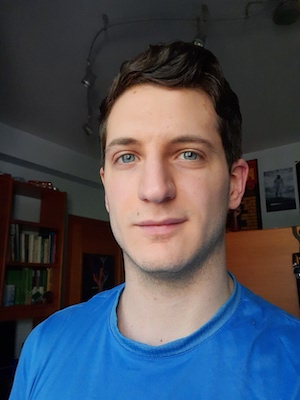 Paolo Cristarella Orestano
Paolo Cristarella Orestano
Questo indirizzo email è protetto dagli spambots. È necessario abilitare JavaScript per vederlo.
Title: "Temporal studies of transient sources in multi-messenger and multi-wavelength Astronomy through the Coloti optical observatory"
The aim of this research project is to develop a strategy for electromagnetic follow-up through the use of the optical telescope located at the observatory of Borgo Coloti, also by making it usable remotely. This will allow the Coloti observatory to follow multi-messenger transient objects, such as the sources of gravitational waves detected by ground interferometers (i.e. LIGO, VIRGO), hence partecipate to GRAWITA, a national scientific network consisting of infrastructures and observatories following multi-messenger events. Furthermore, with the remote control of the observatory we can extend the work of the telescope also for multifrequency observation campaigns of X-ray and gamma-ray sources discovered by satellite instruments.
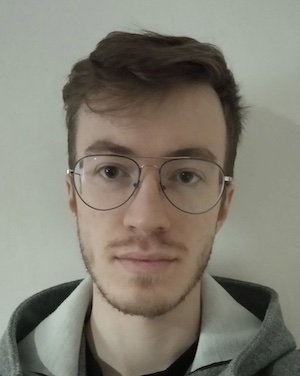 Francesco Faldi
Francesco Faldi
Questo indirizzo email è protetto dagli spambots. È necessario abilitare JavaScript per vederlo.
Title: "Study of the temporal evolution of charged cosmic ray fluxes on the short term scale in relation to solar energetic events"
The aim of my project is to investigate the characteristics of transient and energetic phenomena that occasionally occur on the Sun, such as Coronal Mass Ejections and Solar Flares, analysing the charged particles' flux produced in these events. This investigation consists in measuring the main properties of the solar charged radiation, such as the energetic spectrum, chemical composition and temporal variability. The main objectives are:
- characterization of the temporal evolution of cosmic rays fluxes on quiet periods, during solar events and on subsequent phases.
- reconstruction of the solar component of the energetic spectra during such events with the emission of highly energetic solar particles.
- analysis of possible correlations between charged particles' fluxes and other indicators of solar activity or geomagnetic disturbance in correspondence of solar events (e.g solar wind velocity, intensity and polarity of the Interplanetary Magnetic Field, solar irradiance, indexes of geomagnetic disturbance).
All the measurements involved in this study will be retrieved from astroparticle experiments such as AMS-02 and CALET and from solar observatories such as the Wilcox Solar Observatory or the Solar Orbiter.
 Lisa Fantini
Lisa Fantini
Questo indirizzo email è protetto dagli spambots. È necessario abilitare JavaScript per vederlo.
Title: Study of rare B mesons decays at LHCb
During my PhD I will work within the LHCb group in Perugia. The main topic of my activity and thesis will be the search for signals of new physics beyond the Standard Model (SM). These signals are searched in the rare decays of B mesons with data collected by LHCb experiment at CERN. I will take an active part in the new LHCb data collection period, starting in 2022. I will participate in data taking shifts and service assignments resulting from the Perugia group responsibilities within the collaboration. I will also take part in the research and development activities for future upgrades of the RICH detectors of LHCb undertaken in Perugia, such as the study of new sensors and related readout electronics.
 Jiang Yaozu
Jiang Yaozu
Questo indirizzo email è protetto dagli spambots. È necessario abilitare JavaScript per vederlo.
Title: The Tracking System of HERD
The High Energy cosmic-Radiation Detection (HERD) facility is one of several space astronomy payloads of the cosmic light house program onboard China’s Space Station, which is planned for operation starting around 2026 for about 10 years. The main scientific objectives of HERD are indirect dark matter searches with an unprecedented acceptance (> 1 m2sr), precise cosmic ray spectrum and composition measurements up to the knee energy(1 PeV), and gamma-ray monitoring and surveys (from 500 MeV up to 10 TeV). In the prototype phase, the HERD consists of 5 sub-detectors, from inside to outside is : 3-D cubic calorimeter (CALO),scintillating fiber tracker (FIT), microstrip silicon trackers (SCD), plastic scintillator detector (PSD), then a transition radiation detector (TRD) is located on the lateral side.
My work mainly contains those parts : the estimation of CALO and SCD parameters (the acceptance, efficiency, energy resolution, charge resolution and spatial resolution), the optimization of the Monte Carlo, so that the simulation is as close as possible to the data, the definition/implementation of the calibrating procedures and the analysis strategies .
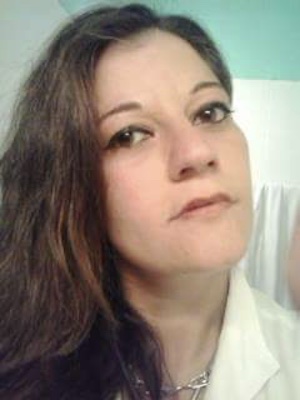 Maria Enrica Mazzella
Maria Enrica Mazzella
Questo indirizzo email è protetto dagli spambots. È necessario abilitare JavaScript per vederlo.
Title: "Development of innovative Data Science tools for touristic applications"
A data-science project is proposed in order to develop predictive analysis tools on urban tourist flows. The starting database is represented by georeferenced points of interest that populate the tourist access application developed by the SME Int.Geo.Mod. srl. The system is based on the proprietary By-Way ™ technology platform, which creates multisensor apps (AR-iBeacon-WiFi), already applied by the company in numerous contexts. By crossing the georeferenced data, the frequency of use and the profile data, it will be possible to create the extended reference database for a high-level analysis capable of interpreting tourist flows on a predictive basis. It will therefore be possible to create specific metrics that can direct flows according to external constraints such as, degree of accessibility of the particular point of interest, level of crowding, specificity of the user, events of particular interest or other. Through the semiotic analysis of user profiles with predictive data-science tools (learning models based on neural networks, the so-called "machine learning") we intend to study the unexpressed tourist potential in order to enhance the marketing strategies of a place or a particular point of interest, even on a personalized basis.
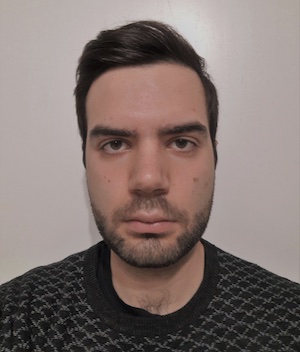 Francesco Millucci
Francesco Millucci
Questo indirizzo email è protetto dagli spambots. È necessario abilitare JavaScript per vederlo.
Title: Biophysical route to optimize the function of a novel enzyme for PET degradation
The discovery of a new leaf-branch compost cutinase variant (e-LCC), optimized for the efficient depolymerization of PET, has recently been reported. With a 90% degradation yield of PET waste reached in less than 10 hour, enzymatic recycling might now be regarded as a viable way to meet our sustainability goals.
The aim of the project is to provide the biophysical basis to:
(i) Improve the performances of e-LCC with respect to working temperture, thermal stability and catalytic efficiency
(ii) Develop a novel biosensor for microplastic detection
To these purposes the structural and dynamical properties of the enzyme, along with the interactions established with PET, will be characterized in the presence of variable environment conditions ( i.e. changing cosolvents, pH, ionic strength etc...).
Both computational methods (molecular docking and molecular dynamics, in collaboration with Molecular Horizon srl) and spectroscopic techniques (such as FTIR, Raman, neutron scattering etc...) will be employed.
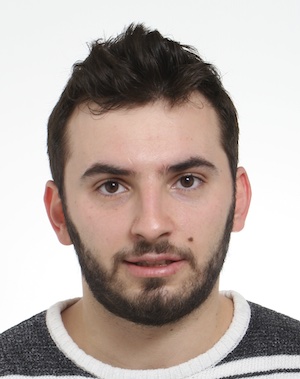 Gabriele Perna
Gabriele Perna
Questo indirizzo email è protetto dagli spambots. È necessario abilitare JavaScript per vederlo.
Title: Study of Pb-free micro- and nano- structured piezoelectric materials for energy harvesting applications
The micro- and nano- piezoelectric structures are of great interest for the implementation of micro systems of energy harvesting by means of mechanical vibrations. They transform any mechanical stress in electric energy which in turn can be stored in batteries or directly used for the power supply of wireless devices. Among the main materials we find the PZT, or lead zirconate titanate, a piezoelectric ceramic with a high energy conversion gain. However, this material is pollutant, toxic and not biocompatible as it contains lead.
The aim of my PhD research project is to select and synthesize chemically materials which can be a valid alternative to PZT, such as zinc oxide (ZnO), barium titanate (BTO) and KNN, or sodium potassium niobate and which have biocompatible characteristics, good piezoelectric performances and a low cost. They will be also characterized depending on their properties, measuring directly the piezoelectric coefficient of a single crystal, not a simple task but with results of strong relevance for the scientific community, not being present in literature yet.
Finally, will be realized a device based on the use of 10 micron crystals displayed as an array of pillars or ribbons, which potentially will have an energy conversion gain that increases in an order of magnitude, with the possibility of applying this idea and technology to an industrial setting.
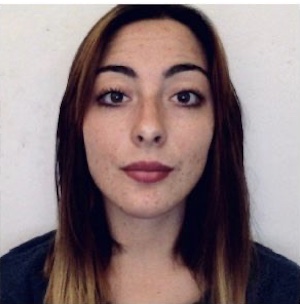 Francesca Peverini
Francesca Peverini
Questo indirizzo email è protetto dagli spambots. È necessario abilitare JavaScript per vederlo.
Title "Use a Si-H as a detection material for ionizing radiation for medical and space applications"
The need for radiation-resistant detectors capable of high dynamic range and precise measurement of fluxes of ionizing radiation of different kind (photons, electrons, protons, ions) is growing. Current and new clinical procedures need high fluxes of particles, e.g. IORT and FLASH therapy. The development of new accelerators techniques, such as Reaccelerated Ion Beams (RIBs) and laser driven accelerators motivate the demand for detectors also for beam monitoring in nuclear physics, astrophysics, and medical research accelerators. Hence, the development of news detectors for dosimetry and ionizing radiation flux measurement is desirable. Hydrogenated Amorphous Silicon (a:Si-H) is a candidate due to its bandgap wider than c silicon, its intrinsic non-crystalline nature that offers a natural resistance to the radiation damage, the possibility to grow in a very thin layer and wide surfaces in one go, because it has been widely used for solar cells, X-ray flat panels.
The project wants to explore the possibility to use a:Si-H as a detection material for ionizing radiation of different types (photons, electrons, protons, ions, neutrons).
A:Si-H sensor has already been used to monitor therapeutic beam at CNAO [37], and we have already carried out some preliminary studies exposing some non-optimized structures either to photon beams, both clinical and laboratory X-rays, and electron clinical beams.
The preliminary results look encouraging.
In order to reach the goals of the project, several steps need to be accomplished: fabrication and optimization of detectors, where sensors will be fabricated using different deposition technologies to characterize their basic physical, electrical and charge collection performances and optimize the quality and reproducibility.
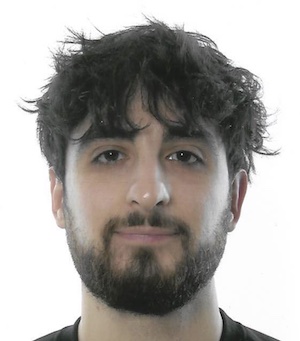 Daniele Pica
Daniele Pica
Questo indirizzo email è protetto dagli spambots. È necessario abilitare JavaScript per vederlo.
Title: Effective one-body description of binary black holes and its extensions.
Since the first detection of gravitational waves in 2015 from the LIGO-Virgo-KAGRA collaboration, the study of the physics and of the dynamics of binary systems in General Relativity has become of paramount importance. At the same time, technological progress is making enormous steps forward and soon there will be available detectors of third generation with extreme high sensitivity. This requires also an improvement of the analytical understanding of the physics that the experiments will be able to detect. In view of this, the aim of this research project is to develop a systematic method for investigating how a 2-body system is modified by an external influence, such as a curved geometry or a third body. Assuming R < < L, where R is the length/time scale of the 2-body system and L the length/time scale of the external influence, we plan to develop an analytical method that captures the dynamics up to some desired order in an expansion in R/L. The methodology we plan to use will take inspiration from the powerful “blackfold” approach, which has been successfully used to describe black brane solutions in higher-dimensional spacetimes, and the Matched Asymptotic Expansions method. For the 2-body system, we will develop a modification of the Effective One Body approach, which is the most accurate and powerful method currently used to describe the dynamics of a binary system in General Relativity, to include the modification for the metric due to the presence of an external influence.
XXXVI ciclo - In corso
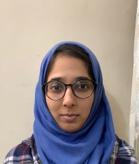 Sehar Ajmal
Sehar Ajmal
Questo indirizzo email è protetto dagli spambots. È necessario abilitare JavaScript per vederlo.
Title: Searching for New Physics at LHC and Future Colliders.
Topic: The research project will focus on signals of physics beyond the Standard Model (BSM) at the LHC, as well as its High Luminosity option (HL-LHC) and future colliders.
We plan to study specific signatures of a composite fermion scenario where excited (heavy) states interact with SM ordinary fermions with both gauge and contact interactions. This model has been recently the object of detailed phenomenological studies in close synergy with two experimental analyses by the CMS Collaboration in the di-lepton and di-jet channel. Other final states should be studied in order to address the mass reach of other exotic particles, like for instance charge 5/3 quarks, at different collider options.
 Luca Bertini
Luca Bertini
Questo indirizzo email è protetto dagli spambots. È necessario abilitare JavaScript per vederlo.
Title: Role of fast dynamics for complexation of M-pro from SARS-COV-2 with inhibitors
Topic:
The aim of this project is to provide a framework for the optimization of the interaction between the Main Protease (M-pro) from SARS-COV-2 with its putative inhibitors by means of a multi-technique approach.
Structure and dynamics of M-pro will be investigated both in its unbound state and following complexation with several inhibitors, including the alpha-ketoamides 13a and 13b, in order to provide a basis for the development of broad-spectrum anticoronaviral drugs.
Following the preparation of the samples, in-house spectroscopic techniques (such as UV-VIS absorption and circular dichroism) will be deployed, along with neutron scattering measurements performed at European large scale facilities like ILL in Grenoble (France) and MLZ in Munich (Germany).
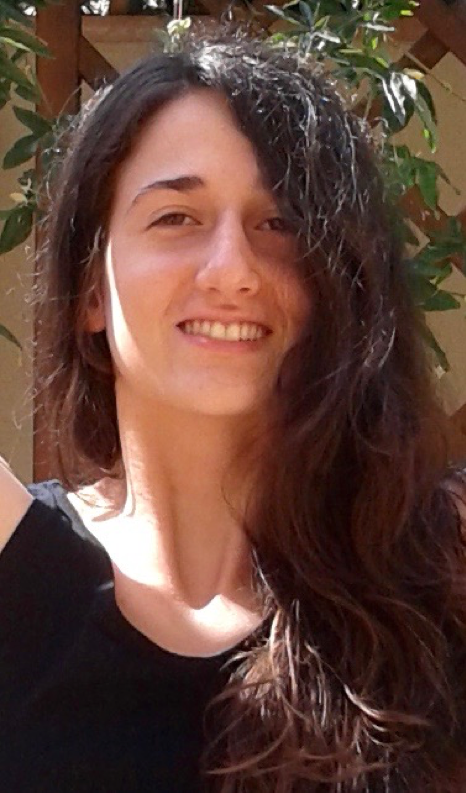 Diletta Borselli
Diletta Borselli
Questo indirizzo email è protetto dagli spambots. È necessario abilitare JavaScript per vederlo.
Skype: diletta.borselli
Title: Study of muon radiography applied to the civil engineering, geology and mining fields for the development of a non-invasive survey methodology for the securing of touristic sites and edifices of cultural and historical interest.
Topic: The work for the doctoral project is dedicated to the application of the muon radiography technique in the geological-mining field for the safety of some areas inside the Temperino mine and the Collins mine located in the San Silvestro Park in Campiglia Marittima (LI). The muon radiography technique allows, through muon absorption measurements, to create two-dimensional and three-dimensional images of the internal structure of the target. The project, in collaboration with the INFN of Florence and the Parchi Val di Cornia spa company, provides for a series of on-site measurements and the development and optimization of algorithms for the three-dimensional reconstruction of cavities and tunnels in still unexplored areas of the mine. In part, I will also work on the assembly of new detectors for muographic applications in various fields: geophysical, archaeological, civil and nuclear safety.
Publications:
G.Baccani et al., The MIMA project. Design, construction and performances of a compact hodoscope for muon radiography applications in the context of archaeology and geophysical prospections, JINST volume 13 (2018), P11001
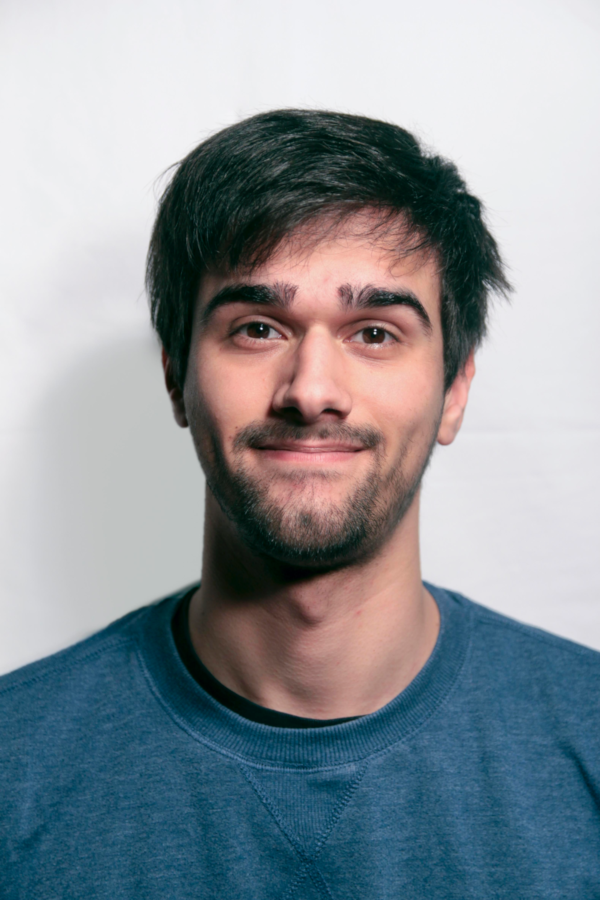 Matteo Magherini
Matteo Magherini
Questo indirizzo email è protetto dagli spambots. È necessario abilitare JavaScript per vederlo.
Title: Vector boson scattering with tau leptons hadronic decays in the final state at proton-proton collision in CMS at LHC.
Topic:
The observation of the Higgs boson from ATLAS and CMS collaborations confirmed the standard model (SM) of elementary interactions. The presence of the Higgs boson, with couplings compatible with those predicted by the SM, provides evidence that contributions from the exchange of this boson may be responsible for preserving unitarity at high energies. However, new phenomena may be present in the electroweak symmetry breaking sector, where a probe of new physics is naturally given by the study of the scattering of massive electroweak bosons, know as vector boson scattering, at high energies, which cross section doesn’t diverge due to a cancellation provided from the exact SM coupling of the Higgs boson with the gauge bosons.
In my research project, we are planning to analyze a particular scattering of two gauge vector bosons: the one between two same-sign W bosons. In this framework, the goal of this research project is to include the hadronic decays of tau leptons as a probe for the final state, which have never been considered before. Thanks to the correlation between different final states and the inclusion of hadronic tau leptons decay, we plan to enhance the sensitivity to discrepancies from the Standard Model over the current results.
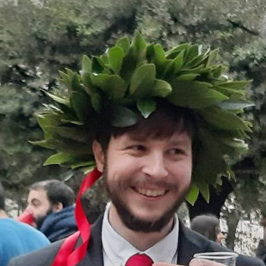 Gabriele Martelli
Gabriele Martelli
Questo indirizzo email è protetto dagli spambots. È necessario abilitare JavaScript per vederlo.
Title: Study of the rare decay Σ^+→pμ^+ μ^- at LHCb
Topic:
This PhD work will focus on the analysis of the LHC Run2 data for the study of decay in dimuonic final states at LHCb. The decay can be described as proceeding through an s d quark flavor changing neutral current (FCNC) interaction, allowed only at loop level in the Standard Model, and by internal conversion. This decay is of interest since it also allows a direct search for a new scalar or vector particle, which could contribute an s d transition at the tree level. The results of this work will be compared with those of the previous analysis and with those obtained from the HyperCP experiment, which hypothesizes to have found a new vector boson that would open the way for new physics beyond the Standard Model.
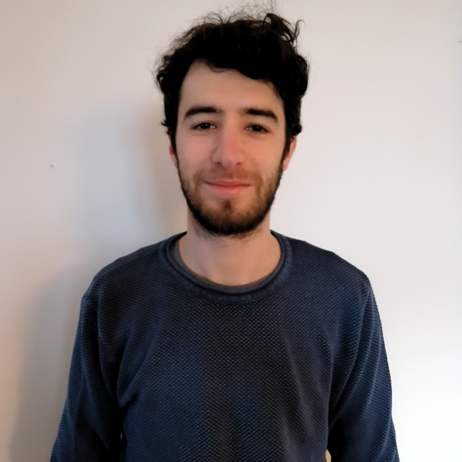 Stefano Moneta
Stefano Moneta
Questo indirizzo email è protetto dagli spambots. È necessario abilitare JavaScript per vederlo.
Title: Precision electroweak measurements at the Belle II experiment
Topic:
Belle II is currently the leading particle physics experiment at the luminosity frontier. Located at the SuperKEKB electron-positron collider, it plans to collect 50/ab integrated luminosity by 2030, looking for hints of new physics beyond the Standard Model.
My doctoral research project takes place within the Belle II Perugia group. The main activities include precise measurement of tau-lepton lifetime and analysis of rare B-meson decays. Furthermore, the group plays an important role in electromagnetic calorimeter operations. In particular, it is involved in background monitoring, leakage corrections, and studies for the full luminosity upgrade.
Il corso di Dottorato in Fisica
Organizzazione
Coordinatore - Livio Fanò
Questo indirizzo email è protetto dagli spambots. È necessario abilitare JavaScript per vederlo.
Membri del Collegio
Giuseppina Anzivino - Università degli Studi di Perugia
Bruna Bertucci - Università degli Studi di Perugia
Giovanni Carlotti - Università degli Studi di Perugia
Claudia Cecchi - Università degli Studi di Perugia
Silvia Corezzi - Università degli Studi di Perugia
Francesco Cottone - Università degli Studi di Perugia
Emanuele Fiandrini - Università degli Studi di Perugia
Luca Gammaitoni - Università degli Studi di Perugia
Gianluca Grignani - Università degli Studi di Perugia
Troels Harmark - Niels Bohr Institute - University of Copenaghen, DK
Marco Madami - Università degli Studi di Perugia
Andrea Orecchini - Università degli Studi di Perugia
Simone Pacetti - Università degli Studi di Perugia
Alessandro Paciaroni - Università degli Studi di Perugia
Orlando Panella - INFN
Monica Pepe - INFN
Alessandro Rossi - Università degli Studi di Perugia
Attilio Santocchia - Università degli Studi di Perugia
Sergio Scopetta - Università degli Studi di Perugia
Leonello Servoli - INFN
Daniele Spiga - INFN
Silvia Tacchi - CNR-IoM
Gino Tosti - Università degli Studi di Perugia
Helios Vocca - Università degli Studi di Perugia
Xin Wu - University of Geneve, CH
Gruppi di Lavoro e Referenti
Didattica
Claudia Cecchi - referente
Questo indirizzo email è protetto dagli spambots. È necessario abilitare JavaScript per vederlo.
Gino Tosti
Alessandro Paciaroni
Marco Madami
Simone Pacetti
Daniele Spiga
Comunicazione
Monica Pepe - referente
Questo indirizzo email è protetto dagli spambots. È necessario abilitare JavaScript per vederlo.
Alessandro Rossi
Monica Pepe
Sara Palmerini
Simone Pacetti
Silvia Tacchi
Convenzioni
Marta Orselli - referente
Questo indirizzo email è protetto dagli spambots. È necessario abilitare JavaScript per vederlo.
Giuseppina Anzivino
Bruna Bertucci
Sergio Scopetta
Andrea Orecchini
Leonello Servoli
Descrizione generale
Il nuovo corso di dottorato in Fisica dell’Università di Perugia, attivo dal XXXVI ciclo, affianca il precedente Corso di Dottorato in “Scienze e Tecnologie per la Fisica e la Geologia” nato dalla fusione nel 2014 delle aree di Fisica e di Geologia nel Dipartimento di Fisica e Geologia.
Il corso, della durata di tre anni, ha una chiara vocazione internazionale e definisce un'area di alta formazione e ricerca imperniata sulla Fisica, così da essere in grado di dare risposte più efficaci alle richieste del mondo della ricerca stessa e del lavoro.
Il corso rende possibile l’erogazione del doppio titolo attraverso numerose convenzioni e collaborazioni internazionali con le più prestigiose università e i più importanti enti di ricerca, in conseguenza delle attività di spicco legate alla ricerca in campo teorico e sperimentale, in tutti i settori attivi nell’area di Fisica del Dipartimento.
Ambiti di Ricerca
L’attività dello studente è coordinata dal supervisor che gli viene assegnato in base all’ambito di ricerca scelto tra quelli attivi nell’area di Fisica del Dipartimento: Astrofisica e Astroparticelle, Biofisica, Fisica Applicata, Fisica della Materia, Fisica della Materia Soffice Condensata, Fisica Medica, Fisica Nucleare e Subnucleare, Onde Gravitazionali e Multimessanger, Fisica delle Particelle e Fisica Teorica.
Il supervisor ha la responsabilità di assicurare allo studente il completamento del percorso di formazione e del progetto di ricerca, sia inquadrando la sua attività in un gruppo locale sia assicurandole un’ampia visibilità nel contesto internazionale.
Attività Didattica e di Formazione dei Cicli XXXVI e XXXVII
L’offerta didattica è erogata durante il primo anno del corso durante il quale allo studente viene richiesto di dedicarsi al consolidamento delle proprie conoscenze seguendo un piano di studio caratterizzato sia da corsi generali avanzati, che da attività di formazione definite dallo studente stesso in base alle esigenze del suo ambito di ricerca.
È richiesto il raggiungimento della soglia di 18 crediti formativi (CFU/ECTS) necessaria per il passaggio al secondo anno.
Per la costruzione personalizzata del percorso formativo gli studenti avranno a disposizione diversi strumenti.
I anno
Il materiale didattico relativo agli insegnamenti del primo anno è qui disponibile.
Primo semestre
1) Introduction to Effective Field Theory (EFT) (Referenti: S. Pacetti, M. Madami, L. Fanò)
- Module I - EFT in the framework of the Standard Model physics (Dario Buttazzo - INFN Pisa).
- Module II - Effective gauge theory in spintronics (Prof. Gen Tatara - Riken).
- Module III - Experimental searches EFT-based (Pietro Govoni - MIB).
2) Probabilità e incertezze di misura (Referente: C. Cecchi)
- Module I - (Prof. Giulio D'Agostini - Univ. Roma1).
3) Nanosystems and advanced materials (Referente: A. Paciaroni).
- Nanosystems I (Prof. Paolo Postorino - Univ. Roma1).
- Nanosystems II (Dott.ssa Maddalena Pedio - CNR).
- Nanosystems III (Prof.ssa Stefania Chiesa - Univ. Ca' Foscari Venezia e Prof.ssa Elena Garlatti - Univ. di Parma)
Secondo semestre
4) Multimessenger Astrophysics - from em multifrequency to gravitational waves (Referenti: G. Tosti, C. Cecchi).
- Module I - Electromagnetic waves+neutrini - (Paolo Padovani - ESO Munich).
- Module II - Onde gravitazionali (Michele Punturo - INFN Perugia).
- Module III (Dott. Giuseppe Greco - Univ. di Urbino).
5) Physics at LHC
- Module I - (Dott. Michele Gallinaro - Lip Lisbona).
6) Introduction to Atmospheric Physics, Climate and COPERNICUS DATA STORE (CDS).
- Module I - (Dott.ssa Paolina Cerlini - Univ. Perugia).
7) Teaching and Learning Physics at University.
- Module I - (Dott. Giovanni Organtini - INFN Roma1).
Totale: 18 CFU.
II anno - Didattica caratterizzante a scelta
Corsi esterni (1,5 CFU)
1) Advanced topics in current and future researches in experimental particle physics - experimental particle physics
2) Advanced topics in current and future researches in theoretical particle physics - theoretical particle physics
3) Future High-Energy Colliders - experimental and theoretical particle physics
4) Thematic Seminar Cycle: Future experiment and facilities (gravity, space, ESS, low energy searches…) - experimental physics
5) Thematic Seminar Cycle: New technologies for future experiments - experimental physics
6) Near Edge X-Ray Absorption Spectroscopy for the study of surfaces and nanostructured materials - soft matter and solid-state physics (M. Pedio)
7) Sources for Ultrafast Spectroscopy - soft matter and solid-state physics (R. Cucini)
Corsi interni (1,5 CFU)
8) Flavour Physics (K+B) - particle physics (tbc)
9) Nuclear Astrophysics - astrophysics (tbc)
10) Advanced low-energy experimental physics - soft matter and solid-state physics (tbc)
11) Spintronics - soft matter and solid-state physics (tbc)
12) Fundamental physical limits in computing - soft matter and solid-state physics (tbc)
13) Ionizing Radiation and Space Weather - astroparticle physics (tbc)
14) Photoelectron Spectroscopy - soft matter and solid-state physics (tbc)
Almeno 6 CFU.
I anno
Primo semestre
1) Introduction to Effective Field Theory (EFT)
2) Probabilità e incertezze di misura
3) Nanosystems and advanced materials
4) EU funding: opportunities for Research and Innovation and proposal writing
Secondo semestre
5) Teaching and Learning Physics at University
6) Multimessenger Astrophysics - from em multifrequency to gravitational waves
7) Applied Machine Learning
8) Scientific Writing for Physicists
Totale: 18 CFU.
Agenda delle lezioni:
https://docs.google.com/spreadsheets/d/1cihwSy0PeuZmJuqr9WMRW-8htB2vHdTqaKAOaQH8-Os/edit?usp=sharing
II anno - Didattica caratterizzante a scelta
Corsi esterni (1,5 CFU)
1) Advanced topics in current and future researches in experimental particle physics - experimental particle physics
2) Advanced topics in current and future researches in theoretical particle physics - theoretical particle physics
3) Future High-Energy Colliders - experimental and theoretical particle physics
4) Thematic Seminar Cycle: Future experiment and facilities (gravity, space, ESS, low energy searches…) - experimental physics
5) Thematic Seminar Cycle: New technologies for future experiments - experimental physics
6) Near Edge X-Ray Absorption Spectroscopy for the study of surfaces and nanostructured materials - soft matter and solid-state physics (M. Pedio)
7) Sources for Ultrafast Spectroscopy - soft matter and solid-state physics
Corsi interni (1,5 CFU)
8) Flavour Physics (K+B) - particle physics
9) Nuclear Astrophysics - astrophysics
10) Advanced low-energy experimental physics - soft matter and solid-state physics
11) Spintronics - soft matter and solid-state physics
12) Fundamental physical limits in computing - soft matter and solid-state physics
13) Ionizing Radiation and Space Weather - astroparticle physics
14) Photoelectron Spectroscopy - soft matter and solid-state physics
Almeno 6 CFU.
1) Italian School of Magnetism - (ref. Giovanni Carlotti).
2) International Doctorate School in Nuclear Physics, “Frontiers in Nuclear and Hadronic Physics, Galileo Galilei Institute (GGI) in Florence - (ref. Sergio Scopetta).
3) European School of Instrumentation in Particle & Astroparticle Physics, Technologies and Applications - (ref. Bruna Bertucci).
4) Winter School in Biotechnology - (ref. Daniele Fioretto).
5) LACES School, Galileo Galilei Institute (GGI) for Theoretical Physics di Arcetri (Firenze) - (ref. Gianluca Grignani).
6) International School of Pure and Applied Biophysics on Quantitative analysis of optical imaging for Medicine and Biophysics: foundations, applications and perspectives - (ref. Silvia Caponi).
7) Detectors and Electronics for High Energy Physics - (ref. Bruna Bertucci / Alessandro Rossi).
8) Seminar on Software for Nuclear, Subnuclear and Applied Physics - (ref. Bruna Bertucci).
9) Conference and Course on Frontiers in Water Biophysics (FWB), Erice - (ref. Lucia Comez).
10) SAPP school - Dark Matter, from theory to detection, Vienna (ref. Livio Fanò).
Allo scopo di allargare gli orizzonti della conoscenza ad aspetti specialistici ed innovativi, lo studente ha la possibilità di seguire seminari su temi anche non strettamente attinenti al suo ambito di ricerca. Il Collegio dei Docenti organizza cicli di seminari, tenuti da esperti delle discipline oggetto del corso (inclusi i componenti del Collegio o ex-allievi del Corso di Dottorato), che si svolgeranno nel periodo compreso tra il primo novembre e il 31 maggio. Questi completano l’offerta di seminari generali organizzati dal Dipartimento, dagli enti di ricerca e dall’Ateneo in generale.
Infine, la partecipazione a seminari organizzati da ogni altra istituzione di alta formazione o ricerca nazionale o internazionale può essere parte integrante del percorso formativo, spetterà al Collegio valutare la corrispondenza tra le attività svolte dello studente e la necessaria richiesta di alta formazione del Corso di Dottorato.
Questa è la pagina Indico dei seminari Physics Highlights Perugia (PHP). La pagina è in continuo aggiornamento.
PhD Science and Tecnology for Physics and Geology INFN Courses&Seminars
- Dal 6 Novembre to 18 Dicembre, A practical introduction to quantum computing: from qubits to quantum machine learning and beyond, Elias Fernandez-Combarro Alvarez (Universidad de Oviedo, Spain): https://indico.cern.ch/event/970903/
- 15 Dicembre, PHP2020: Raggi cosmici e antimateria: teoria e modelli, Nicola Tomassetti (University of Perugia & INFN, Italy): https://agenda.infn.it/event/24541/
- Dal 19 marzo all'11 giugno: Perugia Advanced Physics Seminars (PerAPS) https://www.fisgeo.unipg.it/physdid/PerAPS/
- Cicli di seminari pubblicati dalla Sezione INFN di Roma e dal CERN.
Il percorso formativo sarà arricchito da soggiorni presso altre università o enti di ricerca, in Italia (per un periodo medio di 3 mesi) o all’estero, sia nell’ambito delle istituzioni coinvolte nel dottorato (per un periodo medio di 12 mesi), che presso altre qualificate istituzioni (per un periodo medio di 6 mesi).
Il corso può infatti beneficiare di numerose convenzioni e collaborazioni con le più prestigiose università e i più importanti enti di ricerca. Sono ampiamente consolidate le collaborazioni con gli enti INFN e CNR-IOM, che finanziano borse di dottorato e attività di ricerca internazionali, oltre a dare accesso alle large scale facilities più importanti e prestigiose del settore.
Vengono inoltre definiti dei percorsi di studio internazionali con l’erogazione del doppio titolo attraverso convenzioni specifiche e consolidate, come nel caso di quella con il Niels Bohr Institute di Copenaghen, o in finalizzazione come quelle con l’Università di Ginevra, l’Università di Uppsala e l’Università di Ghent. L'erogazione del doppio titolo prevede un periodo di visiting di almeno 6 mesi con l'attribuzione di 5 CFU/mese.
Il Corso di Dottorato è inoltre in fase di accreditamento per l’International Doctorate Network in Particle Physics, Astrophysics and Cosmology (IDPASC).
L’offerta formativa comprende infine attività organizzate tipicamente in comune tra più dottorati dell’Ateneo, come di seguito descritto.
Formazione disciplinare e interdisciplinare e di perfezionamento linguistico e informatico:
- Corsi di lingua straniera svolti presso il Centro Linguistico d'Ateneo (CLA con riferimento al Common European Framework of Reference (CEFR), che potranno avere una durata semestrale (10 CFU) o annuale (13 CFU);
- L'offerta formativa prevede dei laboratori specifici di approfondimento sia in Dipartimento che in Ateneo, anche con la collaborazione dell'Associazione Italiana degli Studenti di Fisica. I laboratori sono organizzati in moduli con verifica finale da 1 CFU ciascuno relativi all'analisi-dati (ROOT, Mathematica, TensorFlow, R) e programmi la videoscrittura (LaTeX).
Gestione della ricerca, della conoscenza dei sistemi di ricerca e dei sistemi di finanziamento: corsi da 1 CFU riguardanti le tecniche di progettazione e sviluppo della ricerca; la redazione e gestione dei piani finanziari dei progetti di ricerca; la gestione dei progetti per fasi di avanzamento dei lavori e la loro rendicontazione; la gestione dei
rapporti con i finanziatori.
Valorizzazione dei risultati della ricerca e della proprietà intellettuale: 6 corsi da 1 CFU, che tratteranno: il passaggio dalla ricerca di base alla ricerca applicata; le tecniche di valorizzazione della ricerca; il finanziamento della ricerca applicata; la tutela delle opere dell'ingegno; l'intervento degli atenei a favore dei brevetti; l’impresa e gli spin off della ricerca.
Tutti i corsi e i moduli descritti in questa sezione prevedono una verifica finale.
Obiettivi occupazionali post dottorato
Lo sbocco occupazionale primario per i Dottori di Ricerca in Fisica è la ricerca in campo internazionale nelle università, laboratori, large scale facilities e centri di eccellenza.
Gli specialisti formati nel Corso trovano spesso agevole collocazione nei circuiti internazionali della ricerca, con cui i membri del Dipartimento di Fisica e Geologia hanno collaborazioni consolidate. Questo percorso formativo prevede per i dottorandi l'offerta di periodi di ricerca e lavoro all'estero anche prima del conseguimento del titolo, nell'ambito di consolidati programmi di mobilità europea ed extraeuropea. Questi ultimi riguardano le più importanti e prestigiose large scale facilities del settore (CERN, ASI, VIRGO/EGO e ILL, per citare le maggiori), nonché numerose università in tutto il mondo.
Inoltre, la ricerca di base svolta in collaborazione con altri enti di ricerca (INFN e CNR), ad esempio quelle connesse all’esplorazione spaziale, alla fisica dell’energia e alla caratterizzazione funzionale dei materiali, hanno spesso portato ad importanti attività aziendali, stimolando e favorendo la realizzazione di imprese innovative.
Infine, l'insegnamento nelle scuole rappresenta un ulteriore canale occupazionale, molto importante dai punti di vista sociale e culturale, spesso meno considerato dai dottori di ricerca in Fisica.
Strumenti per la ricerca
Ogni studente dispone di una postazione open-space, di eventuali ulteriori spazi, nonché della possibilità di accesso ai laboratori gestiti dai gruppi di ricerca con cui collabora. Questi ultimi hanno anche la possibilità di mettere a disposizione risorse, che si sommano a quelle garantite dalle borse, al fine di sostenerne la ricerca e la formazione degli studenti.
I laboratori attrezzati con strumentazione di misura e acquisizione dati specialistica sono numerosi, tra questi i maggiori sono:
Camera pulita; Laboratorio semiconduttori e di sviluppo rivelatori; Astrofisica e Osservatorio Astronomico; Laboratorio di criogenia e interferometria; Spettroscopia Ottica e Dielettrica; Diffrattometria e Fluorescenza a Raggi X; Microscopia Elettronica; SERMS e Tecnologia Spaziale; NiPS e Energy Harvesting; ICT - Simulation and Data Analysis.
Presso la Biblioteca di Scienze Matematiche, Fisiche e Geologiche è disponibile una vasta gamma di volumi e testi di riferimento per gli studenti, hanno accesso anche alle altre biblioteche di Ateneo e a vaste banche di dati on-line.
Sono inoltre disponibili in forma cartacea le principali riviste internazionali nei settori di interesse del Dottorato. Infine, tramite l'afferenza ai maggiori laboratori mondiali sono consultabili tutte le banche dati bibliografiche necessarie alle attività di ricerca.
Banche dati - Le maggiori banche dati pubbliche internazionali di interesse per le discipline del dottorato sono accessibili on-line e a disposizione degli studenti.
Software - Sono disponibili le licenze per tutti i software necessari alle attività di ricerca connesse al dottorato, come ad esempio Mathematica, LabView, Ansys e molti altri. Le licenze sono messe a disposizione dall'Ateneo, dall'INFN o dai singoli gruppi di ricerca.
Calcolo - Nel dipartimento di Fisica e Geologia è disponibile un centro di calcolo di media potenza, che fornisce alle attività di ricerca le risorse necessarie in termini di CPU e storage.
Sono inoltre presenti laboratori di servizio, organizzati e gestiti congiuntamente con gli Enti di ricerca:
- il Laboratorio-servizio di Officina Meccanica;
- il Laboratorio-servizio di preparazione campioni;
- il Laboratorio-servizio di microanalisi e analisi chimiche;
- il Laboratorio-servizio di elettronica.
Informazioni aggiuntive
Contatti
Contatti, modalità di accesso e bandi:
Questo indirizzo email è protetto dagli spambots. È necessario abilitare JavaScript per vederlo.
https://www.unipg.it/didattica/percorsi-post-laurea/dottorati-di-ricerca


